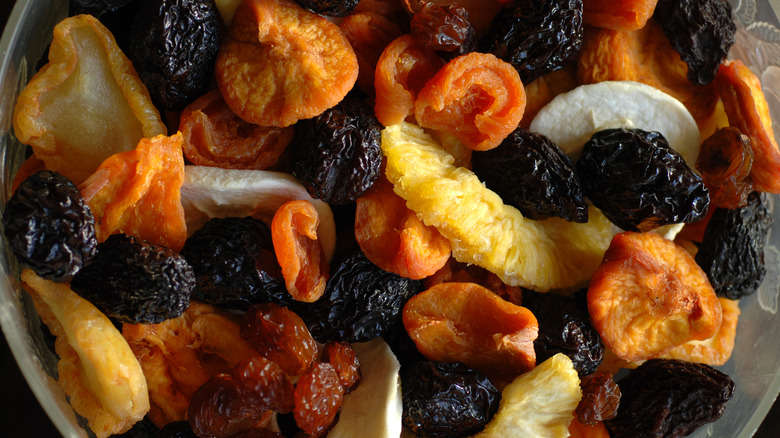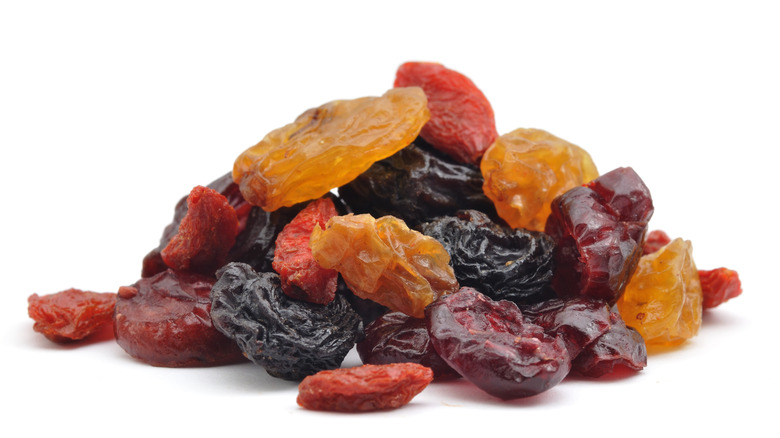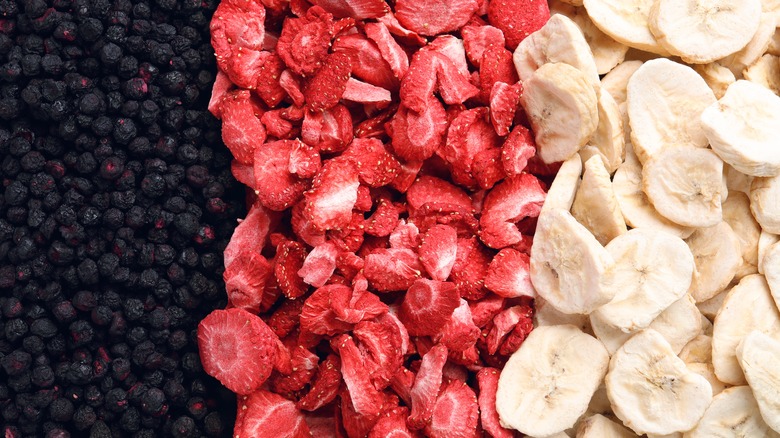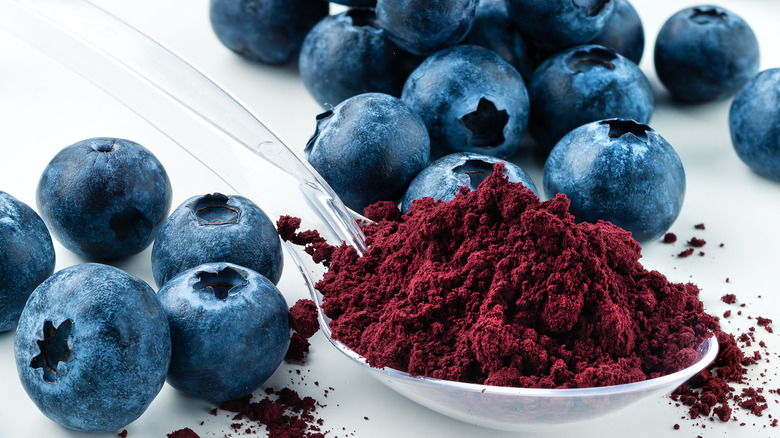The Actual Difference Between Dried And Freeze-Dried Fruit
If you've ever reached for a bag of your favorite dried fruit only to realize later that you picked up freeze-dried instead, then you know that there are major differences between the two. While you might love the juicy, chewy texture of dried fruit, others might love the drier, crunchier freeze-dried version. Drying and freeze-drying are techniques used to extend the shelf life of fruits while preserving their flavors and nutrients. Drying involves removing moisture from the fruit through exposure to heat or air, while freeze-drying utilizes freezing temperatures to remove the moisture.
Dating back thousands of years to 1700 B.C., ancient civilizations dried fruit to be able to enjoy seasonal fruits year-round. Fast forward to the modern era, and both drying and freeze-drying remain popular methods for preserving fruits. To understand how these similar but differing methods of drying impact all kinds of fruit, let's take a closer look at the steps within each technique. Ultimately, you'll find that the elements used to remove moisture are what give fruits their resulting textures and flavors.
What is dried fruit?
When it comes to dehydrating fruit, it's all about removing moisture through exposure to heat or air. Before ovens or dehydrators, the fruit would have been left out in the sun to slowly dry without cooking the fruit. In some cases, early dehydrators were made using wind tunnels.
Today, slices of fruit are placed in a dehydrator or oven at low temperatures, slowly drawing out moisture over several hours or whole days. To accomplish this, the conditions need to be around 130 degrees Fahrenheit. By using this low and very slow method, moisture is drawn out, but the fruit will still retain around 20% of its moisture, giving dried fruit its signature texture. This process results in chewy, concentrated fruit with a rich flavor that is perfect for a wide variety of uses. Though the process removes a lot of the moisture that is present in fresh fruit, plenty remains to ensure this juicy texture with depth of flavor.
What is freeze-dried fruit?
Alternatively, freeze-drying takes the opposite approach and utilizes chilly temperatures, as the name suggests. In this method, fruit is frozen solid and then placed in a vacuum chamber, where the temperature is raised slightly, causing the ice to sublimate, or turn directly into vapor without melting. To do this, the temperature must reach around -40 degrees Fahrenheit. By using such cold, sub-freezing temperatures, almost all of the moisture is removed from the fruit, leaving it whole and intact.
This gentle process preserves the fruit's natural color and flavor, resulting in light, airy fruit with a crispy texture. Freeze-dried fruit can add a burst of brightness to a number of recipes. Pieces of this type of fruit can be used whole, chopped into smaller pieces, or even transformed into a powder for more versatile applications. Though both techniques lead to dried fruits, the use of hot or cold temperatures yields results that are total opposites. With this in mind, let's explore the different ways that each type of dried fruit is best used.
How to use each type of dried fruit
Because of the significant impact each method has on fruit, it's important to consider which is best for your culinary needs. Dried fruit tends to have a richer flavor with a chewy texture, making it perfect for snacking or baking. You'll often find dried fruits added into the best trail mixes, cold salads, baked goods ranging from breads to pastries, and even jams or preserves.
Freeze-dried fruits maintain their texture in cereals, salads, and desserts. When freeze-dried fruits are pulverized into a fine powder, they are perfect for coating or dusting foods. Try sprinkling the powder over ice cream, dusting chocolate that has not quite set yet, or even topping a cocktail for a pop of color. This powder can also be used as an all-natural coloring agent when mixed into meringue, pasta dough, or even frosting. Whether you're craving a chewy treat or a crispy crunch, dehydrating and freeze-drying offer two delicious paths to fruity perfection.



